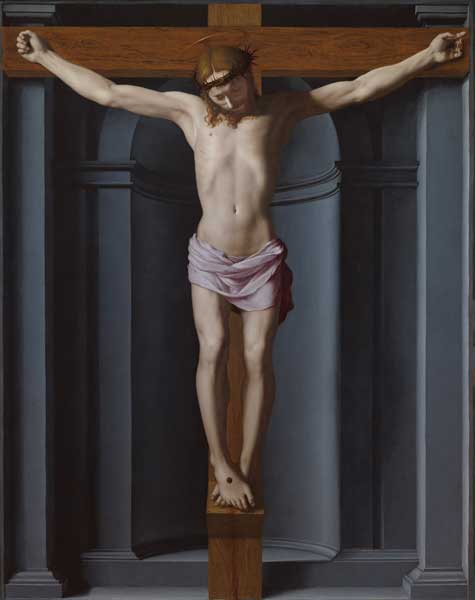Great works: 'Crucified Christ' (circa 1540), Agnolo Bronzino
Musée des Beaux-Arts, Nice

This newly restored masterpiece by a Florentine master who is currently enjoying his first retrospective at the Palazzo Strozzi in Florence, is not a religious painting at all. It is a painting of a young man nailed to a cross who had probably died not long before Bronzino painted him, the ghoulishly arresting image of an almost bloodless cadaver. What is more, it is an extraordinarily seductive and homo-erotically alluring portrait. Physically, it is so delicate and slender – admire the lovely sweep of that pink loin cloth, for example.
Bronzino, who was court painter to Cosimo de Medici, was often commissioned to execute religious paintings. Quite often he did so, but perhaps, we might speculate, a little unwillingly – until the soldis were counted out into the palm. Although we know relatively little about his life and opinions, we do know that Bronzino was not a religious man. He stipulated, for example, that after his death, there should be no Christian service in his memory. His pupil Alessandro Allori, who imitated his manner, respected his wishes. Bronzino was also celebrated for writing breathtakingly scatological verses – which, once again, might be said to run counter to the general drift of sacred doctrine. What he preferred to do was to celebrate the profane glories of the flesh – as anyone who has seen another extraordinary painting by him called Descent of Christ into Limbo in the museum that abuts the church of Santa Croce in Florence, will surely agree. Seldom has there been such a tumble of glowingly fleshy bodies in the full, posing pride of their collective sensuality.
And so it is with this painting too – in part at least. The young man, in spite of his extreme pallor, scarcely looks dead at all. There is a lovely light on his swelling ribcage – in fact, the painting seems to radiate light as if it needs no external source; his legs bow in with an almost wishbone gracefulness. There is a further conceit here. This is a painting of a crucifixion scene all right, but it is not set in a customary landscape. It is not reared up on Golgotha's hill. Or even on an Italian hill. Instead, it appears to be a free-standing crucifix, with body loosely appended, set against the grey, enshadowed niche of a 16th-century church. And, looked at closely, that crucifix seems to be made of the finest of fine woods – scarcely in the condition that it would have been had it been dragged up a hill by the devoted Simon of Cyrene.
So you might say that this is a painting of a sculpture, or even of a sculptural installation – and, if it is not to push the supposition too far, perhaps even one executed with the willing participation of the executors of a real dead man, as it seems to be, of a man who has been willingly sacrificed by his grieving relatives in the name of art.
ABOUT THE ARTIST
Agnolo di Cosimo, also known as Bronzino (1503-72), was one of the greatest artists in the history of Italian painting. Court artist to Cosimo de Medici, he was especially renowned for his chillingly naturalistic portraiture of members of the court. His style prefigures that of Caravaggio and his school.
Join our commenting forum
Join thought-provoking conversations, follow other Independent readers and see their replies
Comments
Bookmark popover
Removed from bookmarks